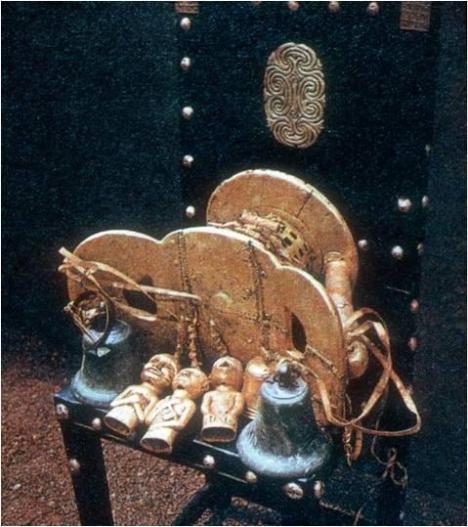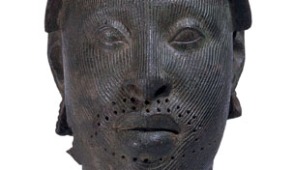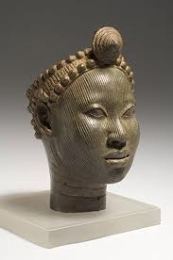There are many faces of art, created to represent family, kingship and power, or divination. It fulfilled religious beliefs, traditions, and a way of life.
Art of the Asante
This is the famous “golden stool” from the Asante of Ghana. It is famous because Asante legend states that Osei Tutu’s priest, Okomfo Anoke had the stool descend from the sky and landed on Osei Tutu’s lap. This stool is in the dramatic category because of how the stool was said to be obtained, and it was covered in gold leaf. Most of the Asante stools were wooden and portrayed some element of the person who owned it. This is an example of kingship and power, and maybe even divination since the stool was believed to come from the sky.
Art of the Ife
These are some examples of the Ife terra cotta and brass heads. These heads are very naturalistic and specific to certain people. They each have many details depicting distinctive physical characteristics of a deceased ruler, or other significant people within their community. The theme for these heads is kingship and power because they were created for use during rituals or worn because of the importance of their ancestors.
Art of the Fang
Art of the Fang, specifically from the Ngi cult created large ground structures containing a special tunnel. The interesting way they created this structure was to shape it a figure of a female. The tunnel lead from the men’s house to an opening between the female’s legs. It was symbolic of re-birth when the Ngi crawled through the tunnel. I would say this would fit into the spiritual, and dramatic grotesque category. This would also be more of a family theme, not like immediate family but family as in their cult and subculture of the Fang community.
These are only a few examples of how art can have different faces, purposes and meanings. Art can be created to represent ancestors, sense of belonging, and a community’s spirit and soul.



I really like how you closed your post, with the community’s spirit and soul as I feel that’s a beautiful way to explain the reality of art within the everyday life of those who create these pieces of artwork in their communities.